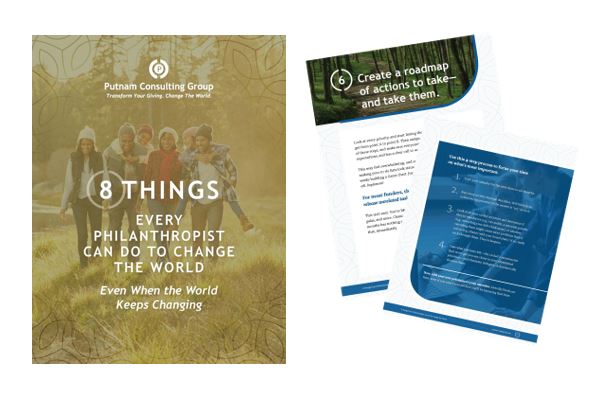As a donor, you want to change the world. You seek transformational change. Lasting change. You don’t want band-aid solutions. You want to tackle a problem at its root, so it no longer exists.
But something is standing in your way. That thing between well-intentioned donors and transformational giving is what I call Delusional Altruism. Now, by “delusional,” I don’t mean donors are stupid or crazy. I mean they’re hindering their impact unnecessarily by holding onto beliefs that get in their own way — including a scarcity mindset.
Despite access to wealth, many philanthropists live, work, and breathe with a scarcity mentality. They misguidedly believe that a Spartan operation equates to delivering more value on the issues donors care about. They believe that if they don’t invest in their own capacity, talent, research, learning, strategy, technology, effectiveness, and infrastructure (or that of their grantees), then they can allocate more money to the causes they support — and therefore achieve a greater impact. Surprisingly, this approach actually has little to do with money.
After advising ultra-high-net-worth donors and philanthropy leaders for more than twenty years, I believe this scarcity mentality is one of philanthropy’s most detrimental self-created restraints. The problem with a scarcity mentality is that it hinders your talent, stalls your creativity, and hijacks your opportunities to create systemic change. And it seeps into just about every aspect of philanthropic giving.
It’s important to understand that a scarcity mindset is a whole belief system, a trickster that fools you into believing that you are saving money. That the less you invest in your talent, infrastructure, and knowledge, the more you can help others. This is of course ridiculous. In fact, the opposite is true: the less you invest in yourselves or your grantees, the less change you can make. But in order to detach from this deceptive mentality, you need to recognize how it happens:
1. Limiting Yourself Based on Your Current Capacity
Too often funders say “I can’t” because they look at their current capacity and abilities and simply cannot imagine taking on a new task. Does this ever happen to you? You postpone a project of strategic importance because you are “too busy” at the moment. You decide you can’t address the root causes of a problem because you don’t have enough funds, so instead, you fund projects that address the symptoms. Or you decide not to fund something because you don’t know enough about the issue. You choose not to ask community members to inform your funding strategy because you don’t feel equipped to address the issues they might raise.
Here’s the thing: You might be busy, lacking information, and ill-equipped. You might not have enough funds to adequately address the root cause. But, so what? Your current capacity, knowledge, ability, and funds shouldn’t limit the transformational change you can create.
You can increase your capacity, gain new knowledge, equip yourself, and leverage additional dollars. It might not be easy. It might take time. And you will probably experience a few bumps and scrapes along the way. That’s just fine.
2. Not Trusting Yourself to Make a Decision
Too often, donors don’t trust themselves to make decisions. Instead, without realizing it, they shroud themselves in a blanket of “more information.” Here’s how it works: You know (or are pretty darn sure you know) the answer. Then, you waste lots of time and money reassuring yourself you’re right. This might be in the form of needs assessments, environmental scans, learning tours, listening sessions, commissioning research, evaluations, and so on. One donor did this after launching her family foundation. She spent a year commissioning research on seven different issues to determine which ones she should support. In the end, she was so overwhelmed by the information she couldn’t make a decision!
Look, sometimes donors genuinely don’t know something, and they need to take time to learn. But while gathering data, understanding community needs, and identifying best practices is critical, you can’t let it get out of hand.
3. Believing You Don’t Deserve Something
Too often, philanthropists feel they don’t deserve to [fill in the blank], such as to invest in themselves, retain an executive coach, fund a needs assessment, attend a conference, improve their technology, hire top talent, learn how they can advocate for policy change, or fund an evaluation.
Why? Because they think their money should go to help others.
This belief might appear noble, but in reality, it’s delusional. To have the greatest philanthropic impact, you need to be the greatest philanthropist you can be. This involves understanding yourself, retaining the best advising, and investing time and resources to build your philanthropic muscle and know-how. To help others, you first need to help yourself.
This article was originally written for and published by Giving Compass.
© 2020 Kris Putnam-Walkerly. All rights reserved. Permission granted to excerpt or reprint with attribution.
New Resource Just For You – 8 Things Every Philanthropist Can Do To Change The World, Even When the World Keeps Changing
As a philanthropist, the world needs what you bring to the table—now more than ever. But if you’re like most funders, constant change has you second-guessing your next steps.
This guide will help you shed anxiety about the future so you can do the most good possible now
Navigate the unknown with confidence!







